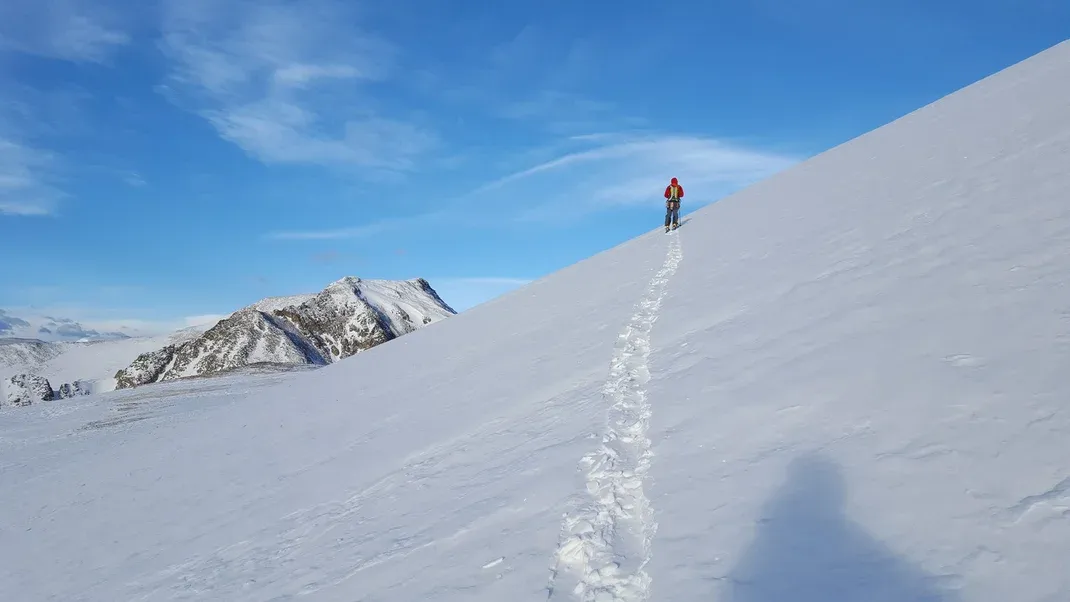Master the Basics of Backcountry Ski Touring
"Master the Basics of Backcountry Ski Touring" is a comprehensive guide for beginners looking to explore the world of backcountry skiing. The book covers essential topics such as gear selection, safety protocols, route planning, and navigation techniques. Authoritative and easy to understand, the book also delves into the fundamentals of avalanche awareness and rescue, making it an indispensable resource for those venturing into the backcountry. With practical tips and advice from experienced skiers, "Master the Basics of Backcountry Ski Touring" is the perfect companion for anyone looking to embark on their first backcountry ski adventure.

Mastering the basics of backcountry ski touring is essential for anyone looking to explore the remote and untamed wilderness on skis. This exhilarating and challenging activity allows skiers to venture off the beaten path and explore pristine, untouched snow in remote locations. However, backcountry skiing comes with its own set of risks and challenges, and it is crucial for skiers to have a solid understanding of the basics before venturing into the backcountry.
First and foremost, backcountry skiers must have a good level of fitness and skiing ability. Unlike resort skiing, backcountry skiing involves long ascents and descents, often in challenging terrain and variable snow conditions. Skiers should be comfortable skiing in a variety of conditions, including deep powder, crusty snow, and steep slopes. It is also essential to have a good level of cardiovascular fitness, as backcountry skiing often involves long hikes or ski tours to reach remote locations.
In addition to physical fitness, backcountry skiers must have the necessary skills and knowledge to navigate the backcountry safely. This includes understanding avalanche safety and terrain management, as well as the ability to read and navigate using a topographic map and compass. Skiers should also be familiar with basic first aid and survival skills, as the backcountry can be unpredictable and remote.
One of the most crucial skills for backcountry skiers is avalanche safety. Avalanches are a real and constant threat in the backcountry, and skiers must be able to assess and manage the risk of avalanches. This includes understanding the different types of avalanches, recognizing potential avalanche terrain, and knowing how to use avalanche safety equipment, such as beacons, probes, and shovels. Skiers should also be familiar with avalanche rescue techniques and be prepared to respond quickly and effectively in the event of an avalanche.
Terrain management is another essential skill for backcountry skiers. Skiers must be able to assess and understand the terrain they are skiing in, including the slope angle, aspect, and snow conditions. This involves being able to recognize potential hazards, such as cornices, cliffs, and crevasses, and knowing how to navigate through challenging terrain safely. Skiers should also be able to make informed decisions about route finding and choosing safe lines of descent.
Navigation skills are also crucial for backcountry skiers. Skiers must be able to read and interpret a topographic map and use a compass to navigate through the backcountry. This includes understanding contour lines, determining elevation, and identifying key terrain features. Skiers should also be able to use a GPS device and be familiar with using electronic navigation tools.
In addition to technical skills, backcountry skiers must also have a good understanding of basic first aid and survival skills. The backcountry can be remote and unpredictable, and skiers must be prepared to respond to emergencies and unexpected situations. This includes knowing how to treat common ski injuries, such as sprains, fractures, and hypothermia, as well as having the necessary equipment and supplies to stay safe and comfortable in the backcountry.
Finally, backcountry skiers must have a solid understanding of gear and equipment. This includes having the appropriate skis, boots, and bindings for backcountry skiing, as well as the necessary safety equipment, such as avalanche beacons, probes, and shovels. Skiers should also be familiar with using climbing skins for ascending and have the necessary clothing and gear to stay warm and dry in the backcountry.
In conclusion, mastering the basics of backcountry ski touring is essential for anyone looking to explore the remote and untamed wilderness on skis. This includes having a good level of fitness and skiing ability, as well as the necessary skills and knowledge to navigate the backcountry safely. This involves understanding avalanche safety and terrain management, as well as having the ability to read and navigate using a topographic map and compass. Skiers should also be familiar with basic first aid and survival skills, as well as having the appropriate gear and equipment for backcountry skiing. With the right skills and knowledge, backcountry skiers can safely and confidently explore the untracked snow and breathtaking landscapes of the backcountry.






